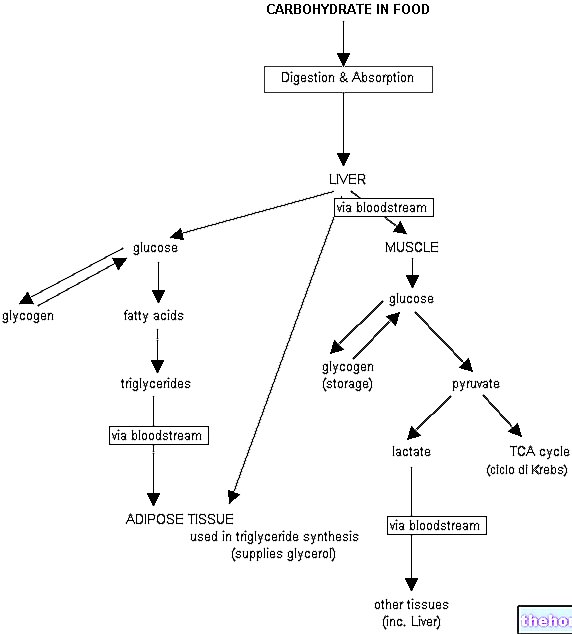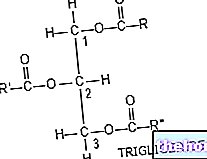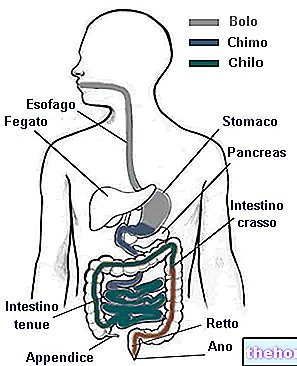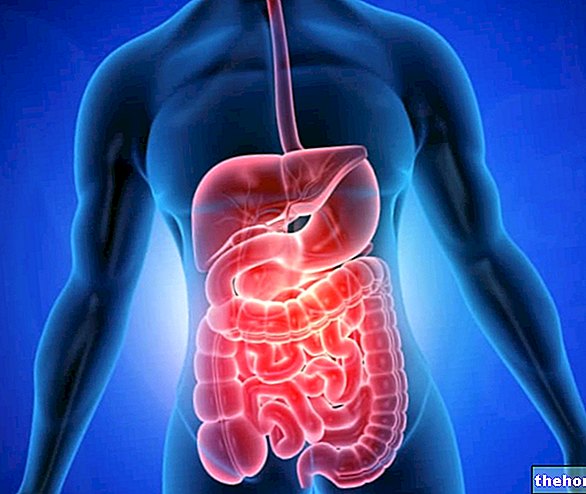The digestion of carbohydrates begins in the oral cavity and continues in the intestine, where the various nutrients are absorbed. The purpose of this process is the hydrolysis of the disaccharides, oligosaccharides and polysaccharides into the individual monosaccharides that constitute them, in order to make them absorbable by the intestinal mucosa. For what has been said, the sugars introduced with the diet, such as glucose and fructose, do not require any digestive process and are absorbed as such. Glucose, in particular, is absorbed by active transport, while fructose crosses the intestinal mucosa by facilitated diffusion; it follows that the levulose is absorbed more slowly and this contributes to lowering the glycemic index.
Starch constitutes the preponderant part of complex carbohydrates taken in a balanced diet; it consists of many glucose units linked together in a linear (amylose) and branched (amylopectin) manner, and is mainly introduced through potatoes, legumes, cereals and derivatives, such as pasta and bread. Its digestion begins in the mouth, where it is attacked by salivary α-amylases, which release maltose and isomaltose (disaccharides formed by the association of two glucose units, respectively joined by α-1,4 and α-1,6 bonds), maltotriose (this time there are three glucose molecules) and dextrins (7-9 units of glucose, with the presence of a branch). oral cavity.
The activity of salivary α-amylases stops in the stomach, due to the acidity that characterizes the gastric environment. The digestion of carbohydrates resumes and is completed in the small intestine, thanks to the combined action of pancreatic and intestinal juices. first, there is an α-amylase enzyme similar to the salivary one, which as such transforms starch into maltose, and dextrins. These cannot be hydrolyzed by pancreatic amylases and undergo the action of special deramifying enzymes (α-1,6 glycosidase, α-dextrinase or isomaltase) present in the epithelial cells of the small intestine. At this level we find further enzymes involved in the digestion of disaccharides; sucrase, for example, leads to the formation of glucose and fructose starting from a molecule of sucrose and provides for the hydrolysis of maltose and maltotriose in synergy with the enzyme maltase; finally, lactase digests milk sugar by breaking it down into glucose and galactose (the deficiency of this enzyme, very common in adulthood, particularly in black populations, is responsible for lactose intolerance).
Once the digestion of carbohydrates into the individual monosaccharides that constitute them is complete, the sugars are ready to be absorbed. As anticipated, this absorption can occur by facilitated diffusion (fructose) or by active transport (glucose, galactose).

Not all carbohydrates introduced in the diet are digestible and even the starch itself, especially if raw, can be difficult to digest. Some vegetables, such as legumes, contain, for example, indigestible oligosaccharides (raffinose, verbascose and stachyose). The same goes for dietary fiber, including cellulose. The digestion of these carbohydrates is instead possible for other animals, such as ruminants, and for the bacteria present in our large intestine. These microorganisms ferment the dietary fiber producing fatty acids with a laxative effect, trophic for the colon mucosa and precious for the general health of the whole organism.
















.jpg)











